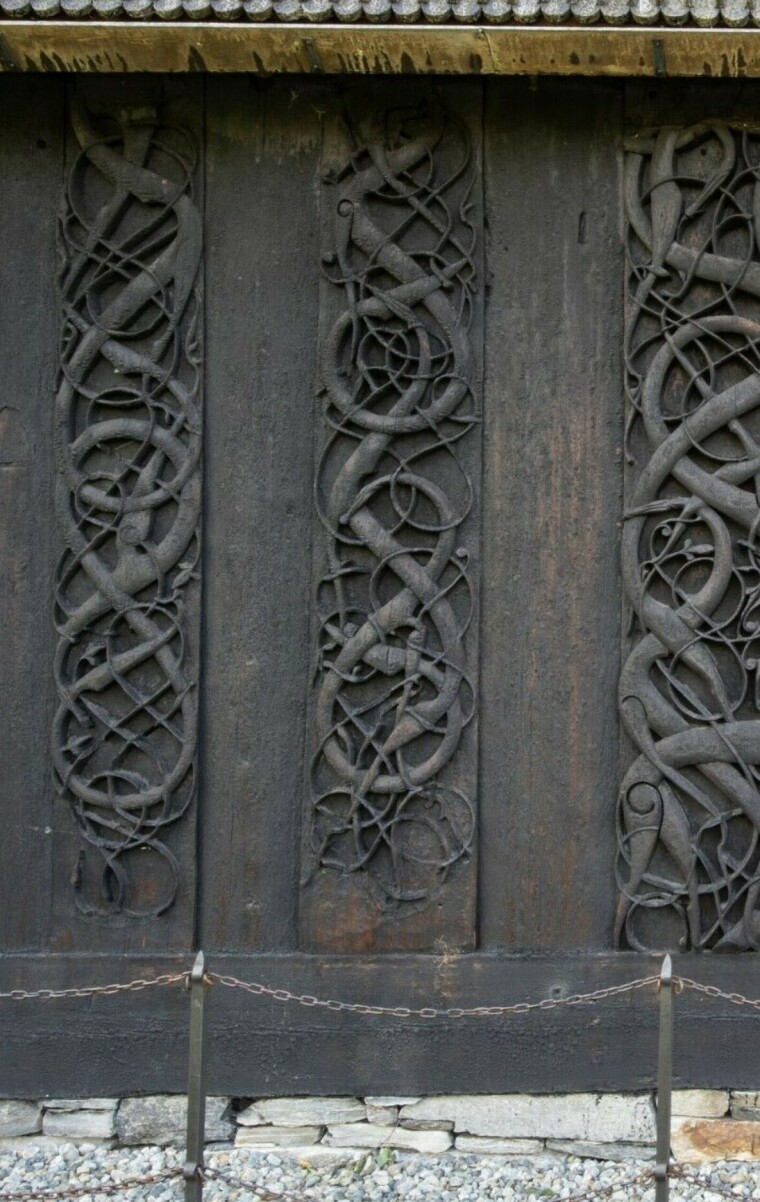
For over 150 years, art historians, archaeologists, and architects have been drawn to the Urnes Stave Church to study it.
One of the greatest mysteries of the stave church is its intricately carved portal.
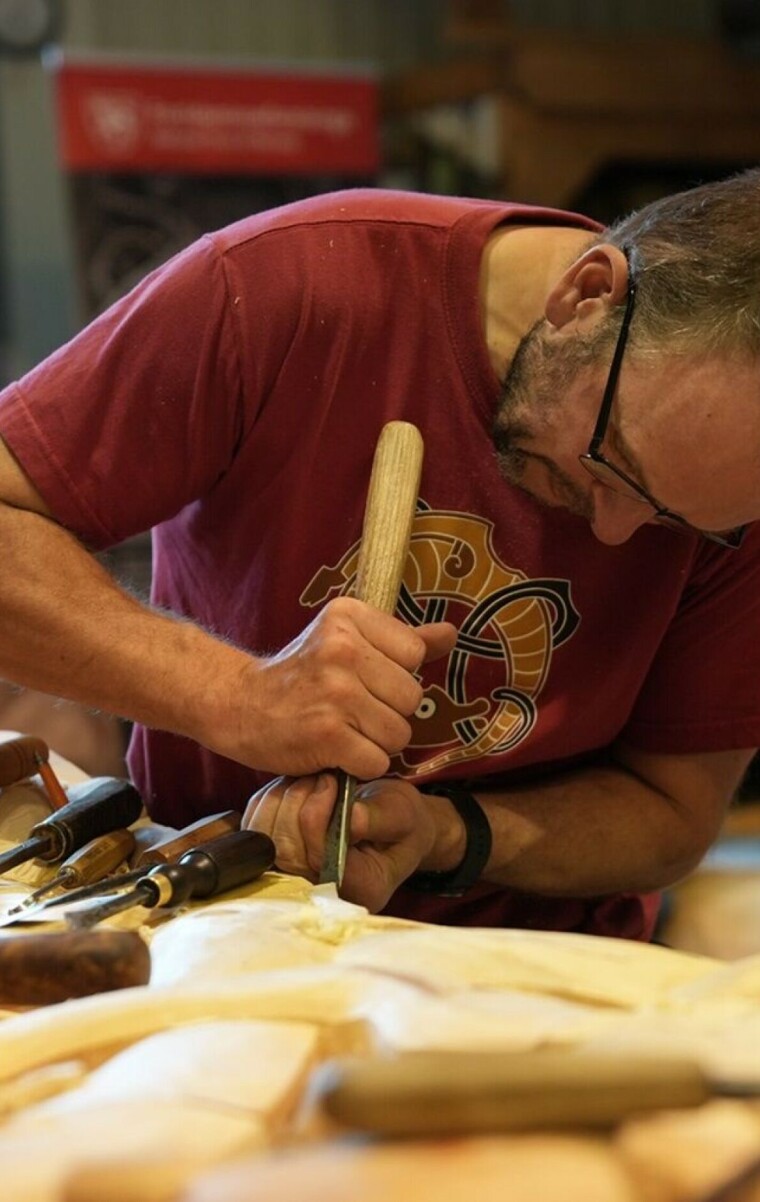
How was it crafted nearly 1,000 years ago?
The answers emerged when craftsmen carved a replica.
“The person who carved the Urnes portal was incredibly skilled,” researcher says.
For over 150 years, art historians, archaeologists, and architects have been drawn to the Urnes Stave Church to study it.
One of the greatest mysteries of the stave church is its intricately carved portal.
How was it crafted nearly 1,000 years ago?
The answers came when craftsmen carved a copy.
Can modern woodcarvers achieve what craftsmen did nearly 1,000 years ago when they created unique Urnes portal?
We will soon find out, as the portal is unveiled after years of work to craft a replica for the planned World Heritage Center at Urnes Stave Church. The church has been on UNESCO’s World Heritage list since 1979.
The challenge was not just to create a modern replica.
“If that were the goal, we could simply have 3D-printed it,” says Linn Willetts Borgen, an art historian and stave church researcher at the National Trust of Norway, which owns the church.
Instead, some of the best woodcarvers from across the country were assembled to recreate the portal using medieval tools and methods.
The shadows were challenging
Urnes Stave Church was built in the early 1130s, but the portal is even older. It was reused from a demolished church that stood on the same site, dated to around 1070. The exceptional craftsmanship likely earned it a place in the new church.
The portal features intricate lines that weave over and under one another. It is a complex design, especially when carved by hand. Meticulous planning is required, Borgen notes.
And all of it had to be done by hand.

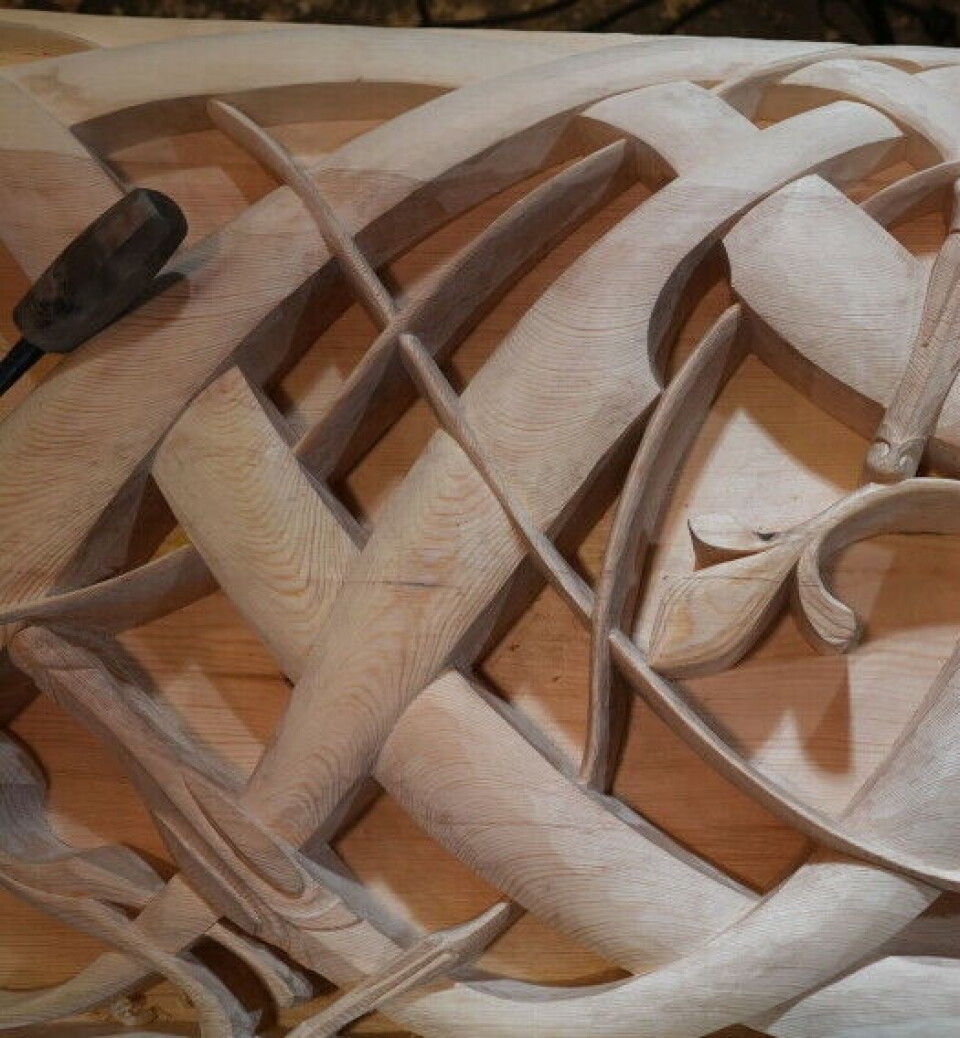
The depth of the carvings makes it difficult to reach narrow areas with tools. What appears to be shadow is actually one of the most time-consuming details to perfect, explains Borgen.
Woodcarver Kai Rune Johansen knows all about that.

There were no pencils, so what could they draw with?
The portal’s design spans 3.5 metres in height.
“How did they manage to compose something on that scale?” wonders Johansen.
Since pencils did not exist, they used charcoal and scribing techniques. By working with a grid, Johansen could sketch in smaller sections. Three workshops collaborated on the portal, and the others drew directly onto the wood without using a grid.
Throughout the process, the craftsmen had different hypotheses and took varied approaches on their way to completing the portal.
Creating ornamentation with a depth of ten centimetres requires specialised tools and precise sharpening.
So, what tools were appropriate? Johansen turned to archaeology for answers.
“I quickly identified the common iron tool models of the time. There wasn’t much advancement in tool design until the Industrial Revolution in 1820,” he says.
Studying old depictions of craftsmen
A valuable resource was the Heiberg collections, which hold a wide range of old tools from the region. The team also drew insights from old reliefs and illustrations that depict craftsmen holding tools.
One tool they discovered was an iron blade shaped like an axe head, though its edge had a slight curve, unlike the 90-degree angle typically used in modern tools, explains Johansen.
It took some getting used to, but it replaced several other modern tools at once, he adds.
“An axe and a pjål sure are effective,” he notes.
A pjål is a Viking Age tool similar to a plane. Another tool some of the craftsmen used was a bottoming tool, ideal for creating flat surfaces in the ornamentation. However, there is no definitive proof that the original craftsmen used this tool, Jon Anders Fløistad wrote in a blog post (link in Norwegian).
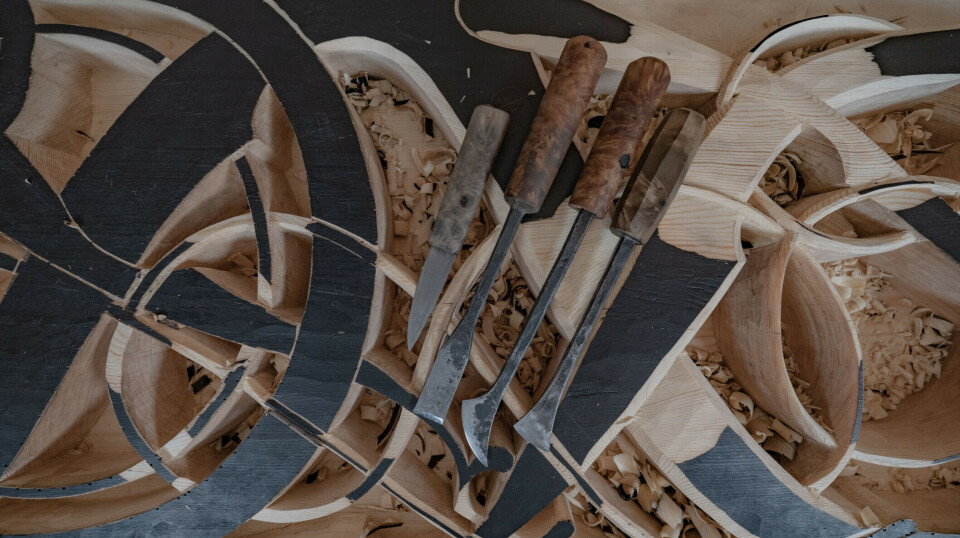
Evidence suggests that medieval woodcarvers worked with fewer tools, but those tools were far more versatile.
Modern technology has also lent a hand. The Museum of Cultural History 3D-scanned the entire portal, allowing craftsmen to study the tool marks and determine which tools were originally used.
Just as the medieval artisans forged their own tools, today's craftsmen followed suit.
Sourcing iron from the forest
They collected peat from the mountains, burned it, and smelted the ore in a furnace, producing iron that they then forged into ten tools.
The handles were secured with pitch or resin.
Johansen found that Viking-era tools often created a smoother surface than modern electric tools.
They also had to gather their own wood, as using timber from a modern supply store was not an option.
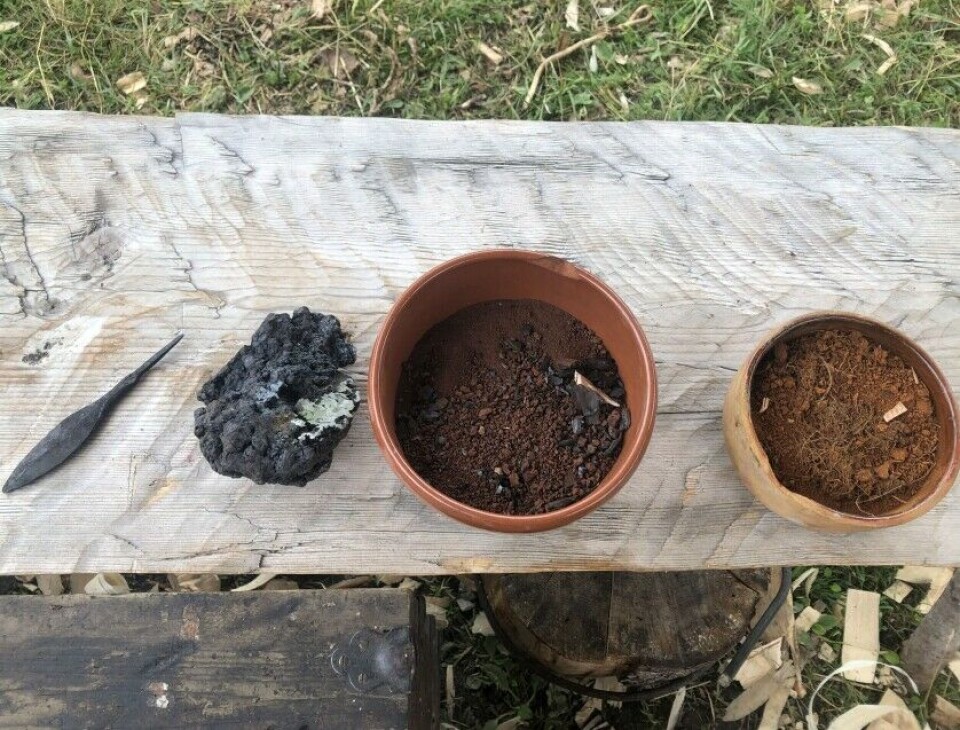

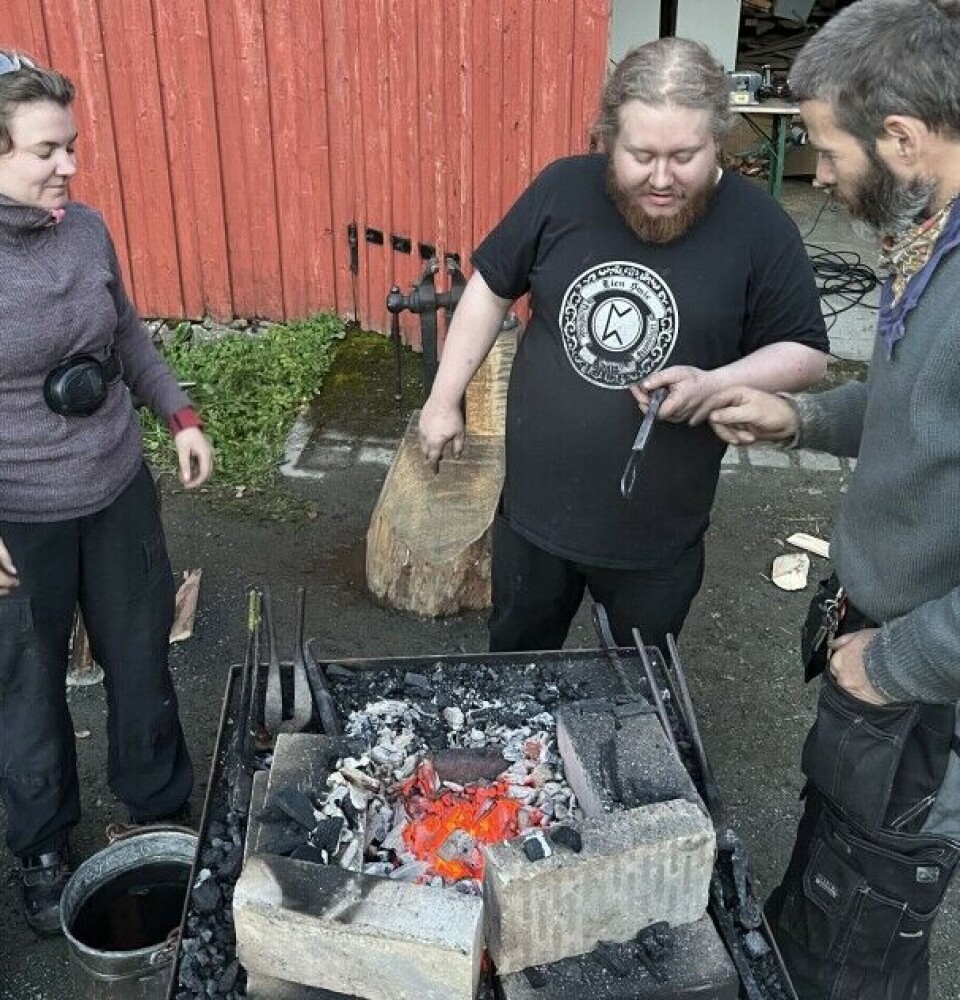
The search for the right pine
Johansen was involved in finding the perfect tree. Stave churches, including the Urnes portal, are made from pine. But it had to be a special kind.
They needed a four-metre-long pine with a consistent one-metre width throughout.
“We got a lot of responses. ‘Everyone’ had a large pine, but they all measured around the base,” says Johansen.
Additionally, the tree had to be local, in line with the wishes of the National Trust of Norway.
The search took time. Finally, in Vik in Western Norway, they found it – a majestic pine standing alone. It was almost perfect: knot-free up to 12 metres, but slightly lacking in width. This was solved by gluing two pieces together.
Brooches in the same style
“There’s a lot of evidence suggesting that the Urnes style didn’t originate in wood. Its design language is far more suited to other materials, but the carver of the Urnes portal was incredibly skilled,” says Kjartan Hauglid.
He is a researcher and art historian at the Norwegian Institute for Cultural Heritage Research, and notes that there is no other portal quite like it.
However, brooches and clasps found across Scandinavia, which are much older, share the same stylistic elements, says Hauglid.
At the time, the church was part of a large estate at Urnes, originally a private chapel on the farm.
“The estate belonged to one of the wealthiest families we know of in Western Norway. They could have afforded to build in stone, but instead, they built several wooden churches in succession on the same site,” he says.
Hauglid sees symbolism in this choice and in the reuse of the portal. The portal was installed in the new church built around 1130.
“They wanted to show that their wealth stretched far back in time. There were things more important than flaunting newfound wealth,” he says.
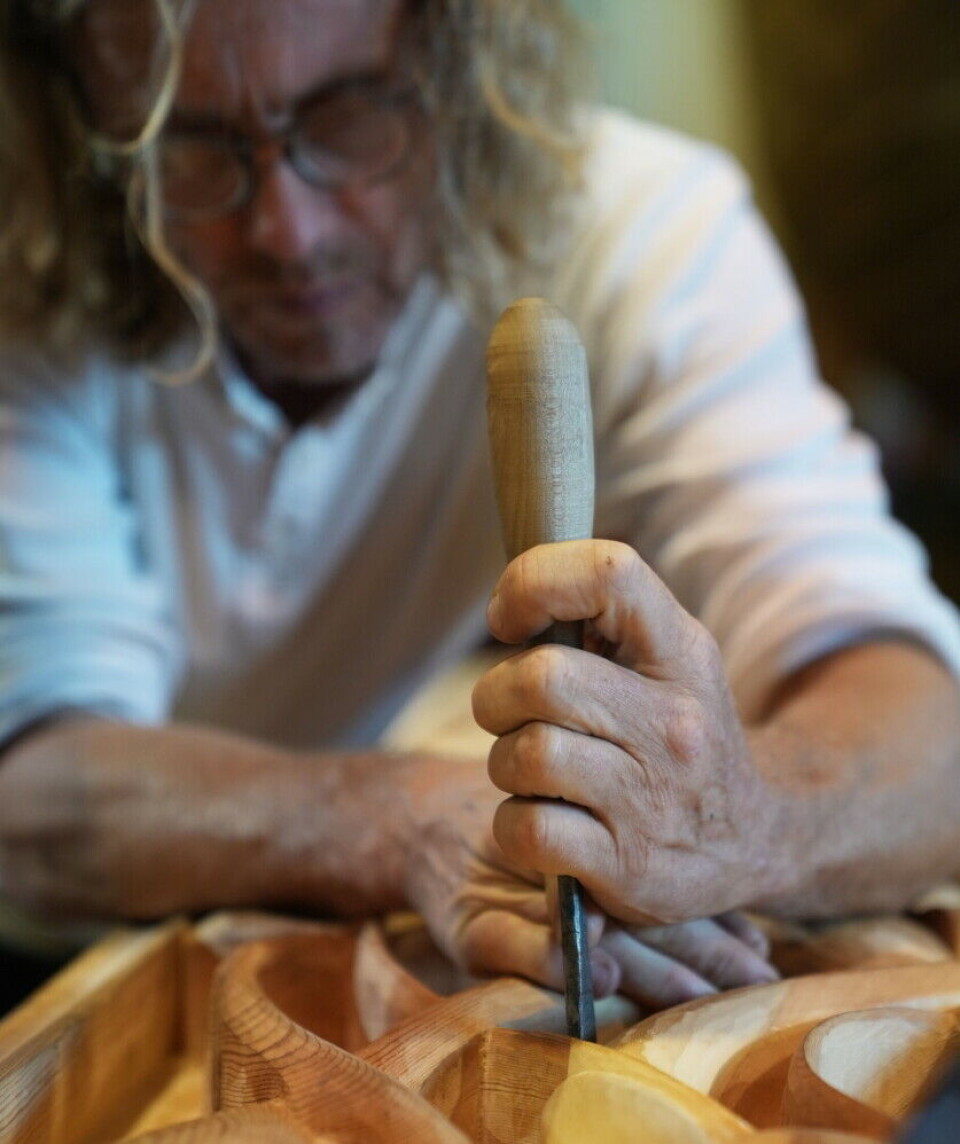

Church art became more classical
The person who led the work on the portal must have had a very strong understanding of style and design, Linn W. Borgen believes.
Hauglid agrees.
“The person who carved the Urnes portal had an enormous understanding of form, understood the style, and followed all the rules,” he says.
The Urnes portal is the last known example of Germanic animal ornamentation – and the most monumental, according to Hauglid. This style disappeared in the 12th century.
“There was a significant shift from the Viking-era woodcarving art to the European church art that emerged in the 12th century,” he says.
At the time, elements like plants and foliage, known from classical art, were reintroduced. The animal ornamentation seen on Viking ships was completely abandoned, the researcher says.
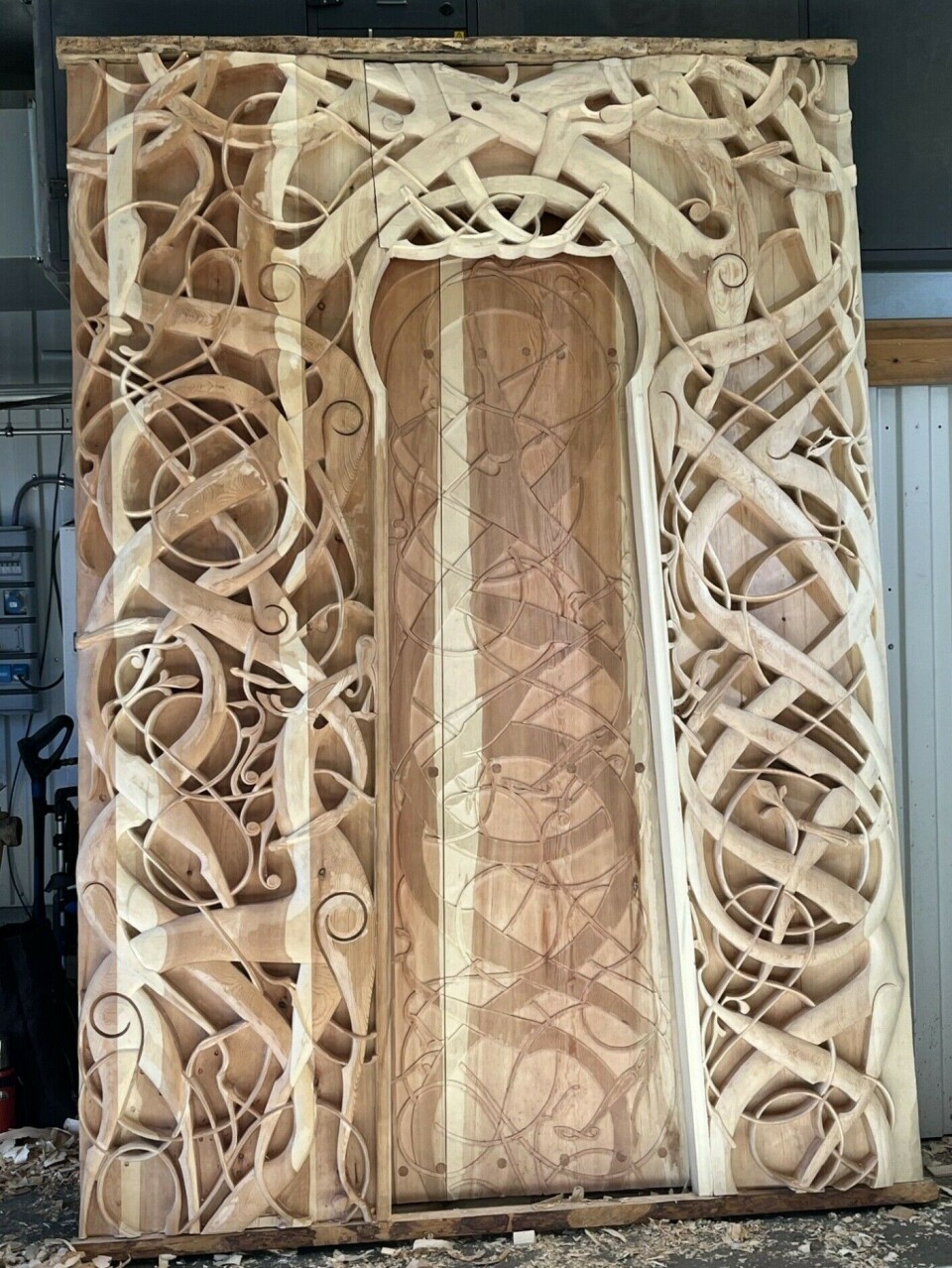

Not the same knowledge today
The knowledge of how woodcarvers worked during that time and how the portal was made has been lost. Everything has to be rediscovered, says Hauglid, who believes this project has done a great job of that.
“We don't have the capability today to build something that will last 900 years,” he says. “The value of preserving things that have stood the test of time is immense. This project has great relevance to other areas of society,” says Hauglid, referring to the green transition.
Modern buildings often last only a few decades. Perhaps we can learn something from the enduring quality of the stave churches.
The new portal was unveiled on September 22, 2024.
The photo of the portal at the top of the article was taken by Kjartan Hauglid / NIKU. The second photo shows Kai Rune Johansen and was taken by Even Hansen.
———
Translated by Alette Bjordal Gjellesvik
Read the Norwegian version of this article on forskning.no






































